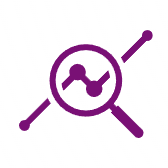Ten months into building a WordPress plugin I continue to be amazed at the things that I have learned. I’ve learned about WordPress, PHP, Java Script, and about plugin development. I’ve also learned a lot about OpenAI and building a chatbot that utilizes the API and Assistants.
However, in recent weeks I have interacted with a dozen or slightly more WordPress site owners and developers around the world, from New Zealand and Australia to France and Spain. The active install base for the Chatbot ChatGPT for WordPress reached what I would call critical mass, i.e., enough people are actively using it.
As a result, it’s breaking! While some of the failures have been edge cases, I’ve worked with each person to figure out a solution. Some people might view this as failing. I don’t. It is success. Real people are really using the plugin!
The big surprise for me was how much the interactions have delighted me. I’ve learned so much from community members who are building content on the WordPress platform.
For example, yesterday I was messaging back and forth over discord with a plugin user that was having a problem. They couldn’t get the plugin to work. After a few exchanges back and forth, I asked them to send me a link to the page where the plugin was deployed.
Almost immediately I could tell using the browser inspector that the plugin was loading correctly, it wasn’t visible on the page. The styling on the plugin was set to embedded and the shortcode was in footer of the page. As a result, the plugin user interface was minimized to 1 pixel by 1 pixel.
As soon as I realized this, I recommended removing the plugin from the footer and placing it on a page by itself. With the styling set to embedded (as opposed to floating) when they reloaded the paged, it worked.
The lesson learned from this developer was to asked where the plugin is located, footer or page. I repeated it to myself several times: embedded styling goes on the page, floating style can go in the site footer.
Just now as I write this, a person I’ve been interacting with over the last few days on a plugin issue, asked about fetching the conversation data logged by the plugin in order to utilizing it in the Assistant. I expect that we’ll work asynchronously over the next few days to deliver the solution they need to their problem.
I’ll learned something. They’ll learned something.
These are just a few examples of the wonderful interactions I’ve had with this community.
When I started this journey in April of last year, I had no idea how much enjoyment, delight, and terror (yes, when the plugin failed and caused website to crash) I would experience. Today, I’m enjoying the accomplishment I have achieved from a rapidly growing and happy install base. I just had no idea that I would find a place like this!
So, today I am truly grateful to the people that I have interacted with over the past few weeks. Because of them, the Chatbot ChatGPT for WordPress plugin has improved so much. To each of you I send you a hearty thank you. Thank you so very much.
#ChatbotDevelopment #WordPressPlugins #AICommunityInteraction
About the Author
Stephen Howell is a multifaceted expert with a wealth of experience in technology, business management, and development. He is the innovative mind behind the cutting-edge AI powered Kognetiks Chatbot for WordPress plugin. Utilizing the robust capabilities of OpenAI’s API, this conversational chatbot can dramatically enhance your website’s user engagement. Visit Kognetiks Chatbot for WordPress to explore how to elevate your visitors’ experience, and stay connected with his latest advancements and offerings in the WordPress community.



Leave a Reply
You must be logged in to post a comment.